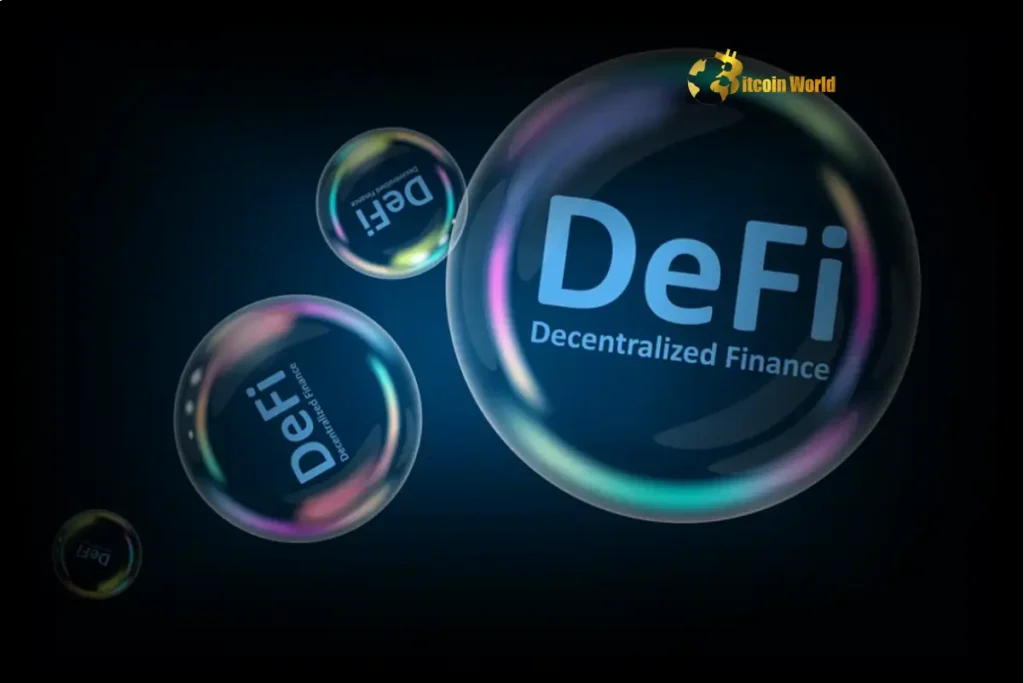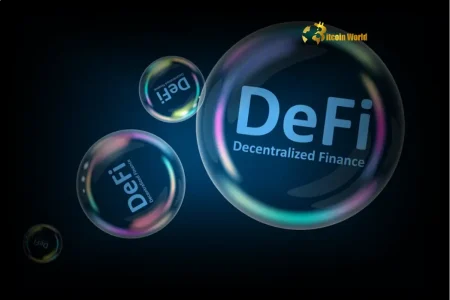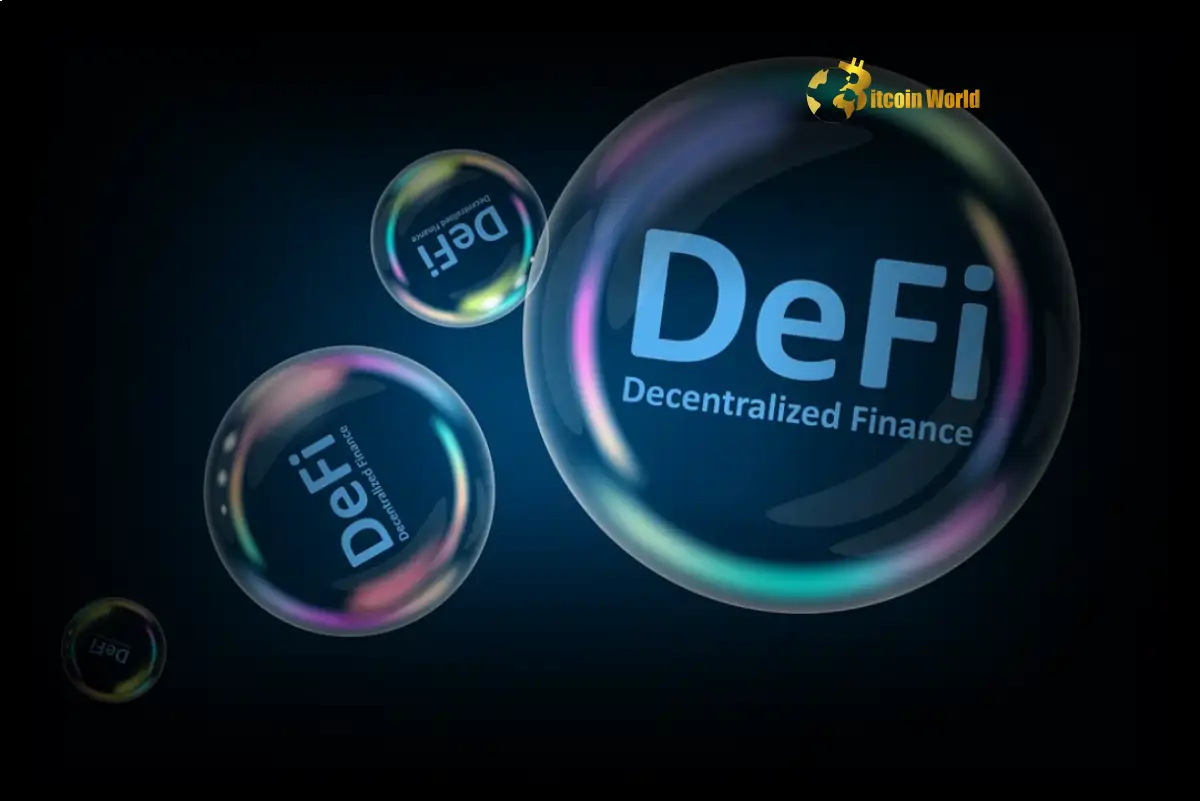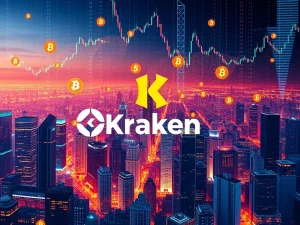DeFi Trends: Unlocking Astonishing Opportunities in Decentralized Finance

BitcoinWorld
DeFi Trends: Unlocking Astonishing Opportunities in Decentralized Finance
Have you been keeping an eye on the rapid evolution of finance? If so, you’ve likely encountered the term DeFi, or Decentralized Finance. It’s not just a buzzword; it’s a revolutionary movement reshaping how we think about money, banking, and financial services. Understanding the latest DeFi trends is crucial for anyone navigating the crypto landscape today.
DeFi leverages blockchain technology, primarily Ethereum, to create open, permissionless, and transparent financial protocols. Instead of relying on traditional intermediaries like banks, DeFi allows users to interact directly through smart contracts. This opens up a world of possibilities, from borrowing and lending to trading and earning yield, all without a central authority.
What Exactly is Decentralized Finance and Why Does it Matter?
At its core, Decentralized Finance aims to replicate traditional financial services in a decentralized manner. Think of it as taking services like savings accounts, loans, insurance, and trading platforms and rebuilding them on a blockchain. This approach offers several compelling advantages:
Accessibility: Anyone with an internet connection and a crypto wallet can participate, regardless of location or socioeconomic status.
Transparency: Transactions are recorded on a public ledger, making them auditable and transparent.
Security: Powered by robust blockchain cryptography.
Innovation: The open nature allows for rapid development of new financial products and services.
Why does it matter? Because it promises to create a more inclusive, efficient, and resilient global financial system. While still nascent, DeFi is growing at an incredible pace, attracting billions in value and countless users.
Exploring the World of Crypto Lending
One of the foundational pillars of DeFi is crypto lending. This allows users to lend out their digital assets to earn interest or borrow assets by providing collateral. Unlike traditional banking, where you need to pass credit checks, DeFi lending platforms typically require over-collateralization.
How does it work?
A user deposits cryptocurrency (e.g., ETH, USDC) into a lending protocol’s liquidity pool.
Borrowers can then take out a loan from this pool, typically needing to deposit more value in collateral than the value of the loan (e.g., deposit $150 in ETH to borrow $100 in USDC).
Lenders earn interest from the fees paid by borrowers.
If the value of the borrower’s collateral falls below a certain threshold relative to the loan value, the collateral is liquidated to repay the loan and protect lenders.
Popular platforms like Aave and Compound have become synonymous with crypto lending, enabling a global market for borrowing and lending digital assets around the clock.
Diving into Yield Farming Strategies
If crypto lending is like earning interest on a savings account, then yield farming is like maximizing returns through various investment strategies within DeFi. It’s a more advanced practice where users deposit crypto into liquidity pools or lending protocols and earn rewards, often in the form of additional tokens.
Yield farmers seek to maximize returns by moving assets between different protocols to chase the highest yields. These yields can come from transaction fees, lending interest, or newly minted governance tokens distributed as incentives.
Key concepts in yield farming include:
Liquidity Providing: Depositing two different tokens into a Decentralized Exchange (DEX) pool to facilitate trading and earn a share of transaction fees.
Staking: Locking up tokens to support a network’s operations (like in Proof-of-Stake blockchains) or within a protocol to earn rewards.
Automated Market Makers (AMMs): Protocols like Uniswap or Curve that use algorithms to determine asset prices based on the ratio of tokens in a liquidity pool.
While potentially lucrative, yield farming involves significant risks, including smart contract bugs, impermanent loss (in liquidity providing), and volatile token prices. It requires careful research and understanding.
Innovative DeFi Protocols and Their Impact
The DeFi ecosystem is a hotbed of innovation, constantly giving rise to new DeFi protocols pushing the boundaries of what’s possible. Beyond lending and trading, these protocols are venturing into areas like decentralized insurance, asset management, derivatives, and even prediction markets.
Consider these examples:
Decentralized Exchanges (DEXs): Platforms like Uniswap and SushiSwap allow peer-to-peer trading directly from your wallet, eliminating the need for a centralized exchange.
Decentralized Autonomous Organizations (DAOs): Many DeFi protocols are governed by DAOs, allowing token holders to vote on proposals and steer the future development of the protocol. This embodies the decentralized spirit.
Synthetics and Derivatives: Protocols like Synthetix allow users to create and trade synthetic assets that track the value of real-world assets (like stocks or commodities) or cryptocurrencies, all on-chain.
Insurance Protocols: Projects like Nexus Mutual offer decentralized coverage against smart contract risks.
These protocols are not just rebuilding existing finance; they are creating entirely new financial primitives and markets that were previously impossible in the traditional system. This continuous innovation is a defining characteristic of DeFi trends.
Learn more about how these innovative protocols are changing finance.
Navigating the Challenges and Risks in Decentralized Finance
While the opportunities in Decentralized Finance are immense, it’s crucial to approach the space with caution. The rapid growth also comes with significant challenges and risks that users must be aware of.
Key risks include:
Smart Contract Risk: Bugs or vulnerabilities in the code of smart contracts can lead to loss of funds. While audits help, they don’t guarantee security.
Impermanent Loss: A risk faced by liquidity providers in AMM pools, where the value of deposited tokens can decrease relative to simply holding them due to price fluctuations.
Liquidation Risk: In lending protocols, if the value of your collateral drops significantly, it can be automatically sold to cover the loan, potentially resulting in losses.
Regulatory Uncertainty: The lack of clear regulations globally poses a risk, as new rules could impact the operation or accessibility of certain protocols.
User Error: Managing private keys and interacting directly with protocols requires technical understanding; mistakes can be costly.
Understanding these risks is the first step towards mitigating them. Always do your own research (DYOR) before interacting with any DeFi protocol.
Actionable Insights for Engaging with DeFi Trends
Ready to explore the world of DeFi trends? Here are some actionable insights to get you started safely and effectively:
Start Small: Don’t invest more than you can afford to lose. Begin with small amounts to understand how protocols work.
Educate Yourself: Read documentation, watch tutorials, and understand the specific risks of each protocol you interact with.
Use Reputable Protocols: Stick to well-established protocols with proven track records and successful audits, especially when starting.
Understand Gas Fees: Transactions on blockchains like Ethereum require gas fees, which can be high during peak times. Factor this into your strategy.
Secure Your Wallet: Use a hardware wallet for significant amounts and be vigilant against phishing attempts.
Monitor Your Positions: Keep an eye on your lending positions to avoid liquidation and your yield farming strategies to manage impermanent loss.
Engaging with DeFi requires a proactive approach to learning and risk management. But with careful planning, it can offer exciting new ways to participate in the financial ecosystem.
The Future of DeFi Protocols: What’s Next?
Looking ahead, the evolution of DeFi protocols is expected to continue at a rapid pace. Several key areas are likely to see significant development:
Scalability Solutions: Layer 2 solutions are becoming increasingly important to reduce transaction costs and increase speed, making DeFi more accessible.
Interoperability: Connecting DeFi protocols across different blockchains will create a more unified and liquid ecosystem.
Real-World Assets (RWAs): Bringing traditional assets like real estate, stocks, and commodities onto the blockchain could unlock massive new markets for DeFi.
Improved User Experience: As the technology matures, interfaces will become more user-friendly, lowering the barrier to entry for mainstream users.
Decentralized Identity and Reputation: Developing on-chain identity systems could allow for under-collateralized lending and more sophisticated financial products.
The journey of Decentralized Finance is far from over. It represents a fundamental shift that could redefine finance for generations to come.
Concluding Thoughts: Embracing the Decentralized Future
The latest DeFi trends paint a picture of a dynamic, innovative, and rapidly expanding financial frontier. From the accessibility of crypto lending to the complex strategies of yield farming and the continuous emergence of novel DeFi protocols, the ecosystem offers compelling opportunities for those willing to learn and engage. While challenges like smart contract risk and regulatory uncertainty remain, the potential for creating a more open, transparent, and efficient global financial system is immense. By understanding the core principles, staying informed about developments, and practicing diligent risk management, you can confidently explore and participate in the exciting world of Decentralized Finance. The future of finance is being built, and DeFi is at the forefront.
To learn more about the latest DeFi trends, explore our article on key developments shaping Decentralized Finance future oriented activity.
This post DeFi Trends: Unlocking Astonishing Opportunities in Decentralized Finance first appeared on BitcoinWorld and is written by Editorial Team












